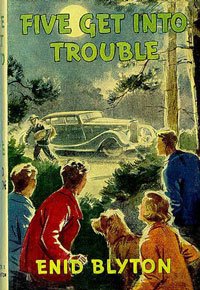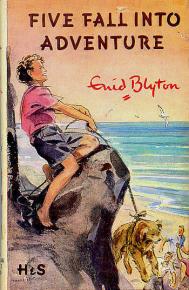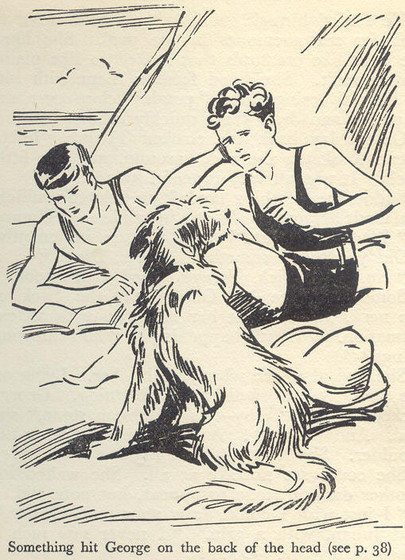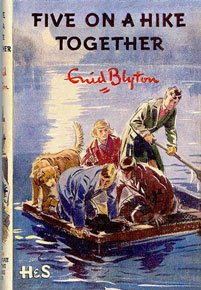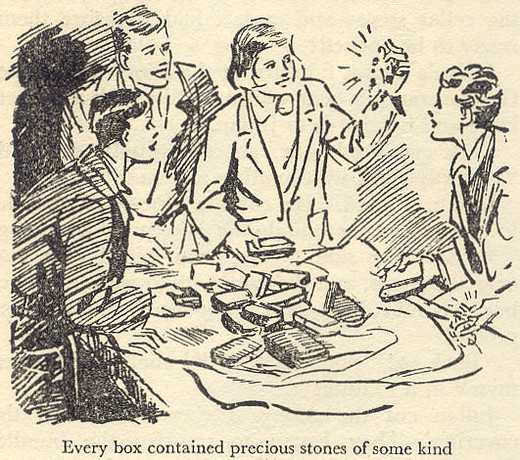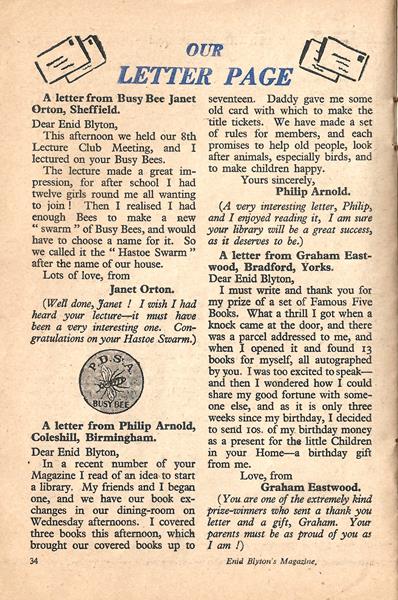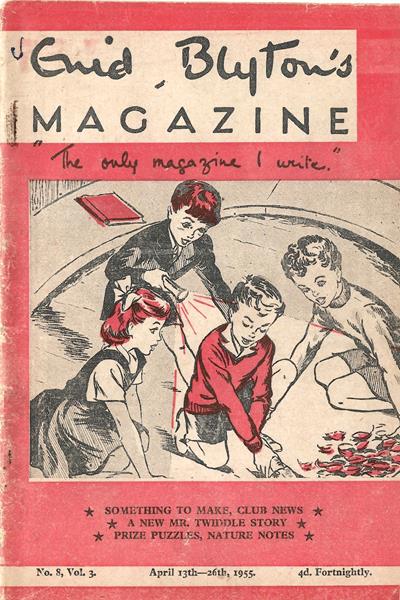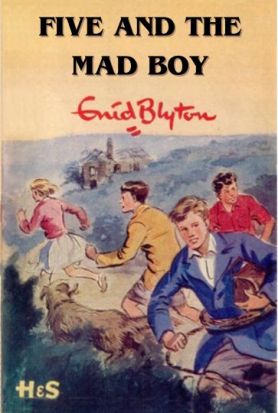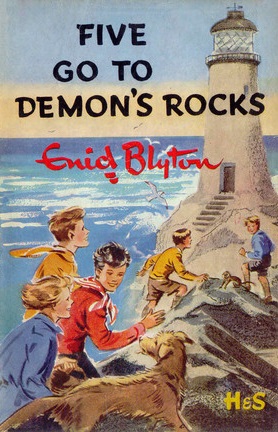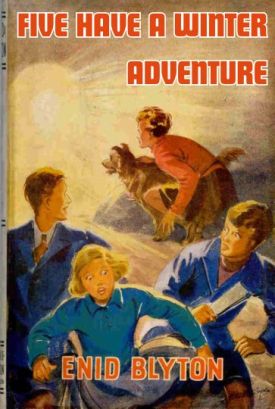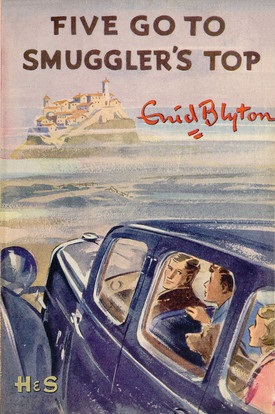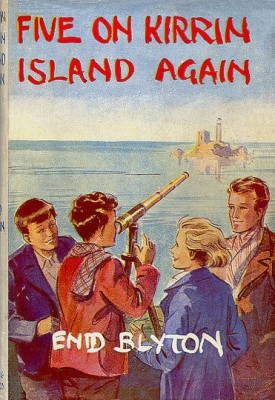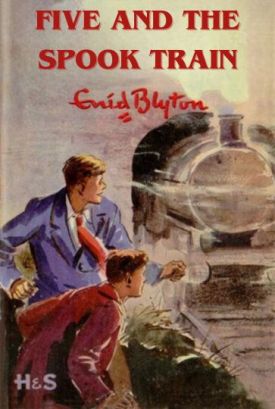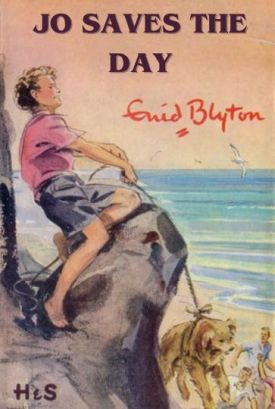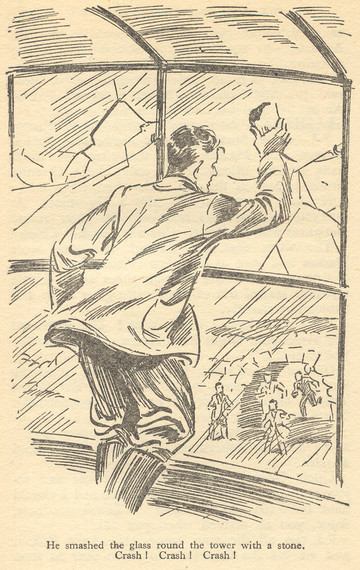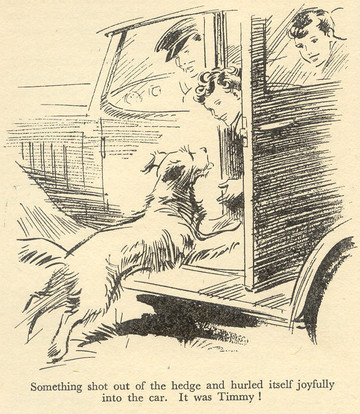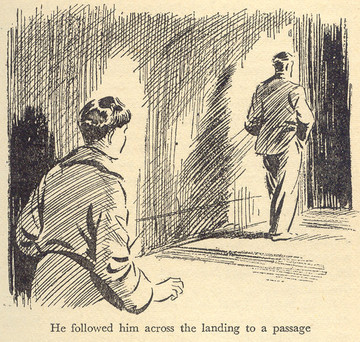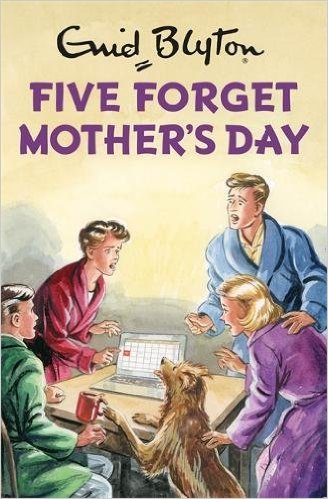We have been making our way pretty quickly through the series, two chapters a night at least five nights a week really adds up! These three books were read between January 10th and February 16th of this year.
Five Have a Wonderful Time
 Looking at the front cover before we started Brodie predicted that the Five would be going to a castle this time.
Looking at the front cover before we started Brodie predicted that the Five would be going to a castle this time.
When it came to Bufflo and his whip he said What, he cracked it, broke it into pieces? and so I had to find some videos of people cracking whips to demonstrate what it really meant.
He liked the different bird calls early in the book and went to bed one night singing a little bit of bread and no cheese.
I tried to see if he would remember the significance of eyebrows when it came up, but he just said What? We ALL have eyebrows.
One night he begged and begged for another chapter as he just had to hear about the fire eating performance. (He complains when I stop reading/begs for more pretty much every evening but this was to an even greater degree than normal.)
His idea as to how the face/the scientist got up into the tower was that maybe his experiments got him up there. I asked what sort of experiments, maybe something that made him fly and he said yes… that or maybe he went up and then piled up lots of stones to block the way.
I asked him if he knew what a pitcher was and he said yes, a thing you draw and hang on the wall. I had a bit of a time trying to enunciate the difference between picture and pitcher for him and he couldn’t say pitcher himself. He did understand that the chocolate wrapper wasn’t as old as the castle, though. When they came out into the gallery he said I know what that is, a place with lots of pictures on the walls.
He had trouble with Pottersham’s name – What’s his name? Poppersham? Poshersham?
When we finished it he said That was my real favourite. Well they’re all my favourite mostly.
He liked Bufflo the most, and he liked Jo a lot. He liked the (awful) accents. And the fire eater because fire eaters are so good. And then the snake man.
He liked the exciting part most, not the boring part where they were just going off. The adventure part was best. So far he’s liked all the buildings that have been included in it, the castles and stuff.
He just likes it when people get hurt. But just pretend not real. So he liked the bit with the snake attacking the men.
He thought Timmy getting stew dropped on his nose was funny.
Five Go Down to the Sea
 What will we read tonight? The Famous Five. Of course!
What will we read tonight? The Famous Five. Of course!
Julian lists the things they like to do on holidays and Brodie added and have adventures, and was not at all impressed by them all making a vow to ignore any adventures that come up.
He thought, though, that they’re going to be too joyful and say yes to the adventure – and he threatened that he was not going to hear the book unless they were going to have an adventure.
One night he started talking about the other wreckers and I couldn’t figure what he meant then I realised he meant the Barnies. He totally thought that the Barnies were all wreckers and kept on calling them the wreckers.
His other thought was that there’s a thing on the old house which collects lighting to power up a light or stores it in a jar and that’s what old grandad sees. He was definitely closer with his first guess!
The boys follow the mystery man back to the farm and after thinking about it for a minute Brodie said I can’t guess who it is… oh I do know but I can’t remember his name. The one who makes the funny noises. What’s he doing out in the night?
I had to explain the idea of two men wearing the horse suit to which he said that doesn’t sound comfortable!
He asked asked if the girls were going to go to the tower the second time, or get left behind again.
He thought that picking currents had something to do with electricity. He wasn’t that bothered by the reveal of Mr Penruthlan having no teeth, but I think he thought it was a joke. Then he did seem a bit surprised when I told him it was true.
He thought seeing a wrecking would be fun, there’d be a wreck to explore like the first book and all the loot! I called him bloodthirsty and he was very very offended and upset that I’d used bad words, called me a bad word as a child.
He found Clopper hilarious, was killing himself laughing, so I thought he’d do the same or more for Ju and Dick’s turn in the suit, but he didn’t seem to find that so funny. He did worry that they’d be trapped forever though.
There was almost a tantrum when I stopped reading as they arrived at the old house with the tower, he was desperate to know if someone was still there.
He then decided that old grandad was one of the wreckers. He ticked off the following facts on his fingers. Who has seen the light? Grandad. Who knew about the wrecking? Grandad. Who knows the wreckers way? Grandad. It’s the only explanation!
He suggested the light-man could have come down the chimney by helicopter drop.
There was lots of cheering when Yan rescued the Five from the cave.
When we finished he said that he didn’t like Sea so much because there weren’t any shipwrecks. But he liked the two secret passages. His favourite characters were George, Julian, Dick, and Yan in that order. He also liked the grown ups because they helped the Five sometimes.
Five Go to Mystery Moor
 Brodie was very concerned that the Five couldn’t have an adventure if they were not together. But he thought if the girls did some camping they might bump into the boys. Or there might be a secret passage between their camp sites… He predicted that the boys would like Henry, and told me to stop shouting so much, but George kept being angry!
Brodie was very concerned that the Five couldn’t have an adventure if they were not together. But he thought if the girls did some camping they might bump into the boys. Or there might be a secret passage between their camp sites… He predicted that the boys would like Henry, and told me to stop shouting so much, but George kept being angry!
He wondered if the someone who was quite near the Five’s camp was the one Bartle who was still left. (If it was she’d probably have been a ghost by then!)
I had to explain hearth rugs to him and also that rugs for sleeping are more like blankets than carpets.
Interestingly he was adamant that aeroplanes weren’t around in the Famous Five’s time as it was a long, long time ago. I’ve probably explained to him so many times that the books were set a long time ago, and that’s why so many things are different and he’s gotten a bit carried away with how old they are.
He thought the light might be a signal to the plane, then that maybe it was the gypsies looking for the children if the sniffy boy had told on them.
Julian gives the others three guesses as to what’s in the parcels. I let Brodie answer. Tartan. Cheese. Feathers. Ink feathers! (I think he meant quills) When it’s revealed to be paper of some sort he said it might be scientific papers.
Before he settled to sleep one night he asked me Why doesn’t Henrietta just get the police? I mean, it’s a very valid question!
He was pretty adamant, in fact, that the police should be called. When Henry panics about walking to the rescue, I was waited for Brodie to say they should take, horses but he went for calling the police again.
His favourite characters this time: he liked the policemen. Actually he liked all the characters. Apart from Anne. (Poor Anne, I wonder if we will like her better as a tiger?) His favourite part: he couldn’t choose as it was all so exciting. Some books he said are only adventurous for a little bit but this one was exciting all the way through.
He was quite taken with the idea of making patrins, so as I said in February’s round up, we went to the park after school one day (with Stef) and he made his own patrin.














































